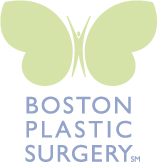4 Methods to Reduce the Appearance of Stretch Marks
Posted on June 16, 2009 | by Boston Plastic SurgeryIf your body weight has fluctuated significantly, you might notice stretch marks around your thighs, hips, stomach, or breasts. These may be permanent, but thanks to medical advances there are treatment options available to reduce the appearance of stretch marks.
As the warmer weather is upon us and we wear less clothing, it’s time to reveal the skin that has been hidden under our clothes all winter and spring. Is that a frightening thought? Don’t despair: we’re with you on this – you don’t need stretch marks to ruin your summer.
Here are some simple solutions to get your skin in warm weather shape, so you too can be comfortable enough to enjoy all the warm weather activities.
Laser Resurfacing has become more precise in recent years and can reduce the appearance of stretch marks after a series of treatments. The laser zaps the top layer of skin and stimulates collagen production deep within the skin’s layers. This helps remove uneven skin tone, scars and other skin problems on the skin’s surface and restores your skin to a much healthier state.
Fractional Non-ablative Laser Most doctors agree that once stretch marks are white, a fractional non-ablative laser is a very effective treatment. It feels like rubber band snaps on the skin, your doctor will either recommend prescription-strength ibuprofen, acetaminophen and/or topical anesthetic. Most patients will need 4 or 5 treatments, every six to eight weeks. You can expect to improve the texture of stretch marks by nearly 50% after completing a series of treatments.
Microdermabrasion Treatments are another effective method for treating stretch marks. This procedure buffs away the top layer of skin and also stimulates collagen production. Most patients need between 3-6 treatments to see a noticeable difference, but it is still cost effective and the results are pretty stellar.
Prescription Retinoids are the only topical products that have been demonstrated to be effective for treating and improving stretch marks in the early stages. For red stretch marks, a retinoid cream applied daily for six months has been shown to improve the appearance by about 14%. For white stretch marks, color will not be restored but a prescription strength retinoic cream can help even out texture. As always, talk directly to your doctor about the benefits, the method of use and any risks. For example, you shouldn’t be using retinoids while either pregnant or breastfeeding.
Other non-invasive skin treatments, such as chemical peels and/or prescription topicals used in combination with microdermabrasion treatments, can help improve the texture and tone of your skin. Consult with us further about skin care so you can get that body ready for this summer’s season.
